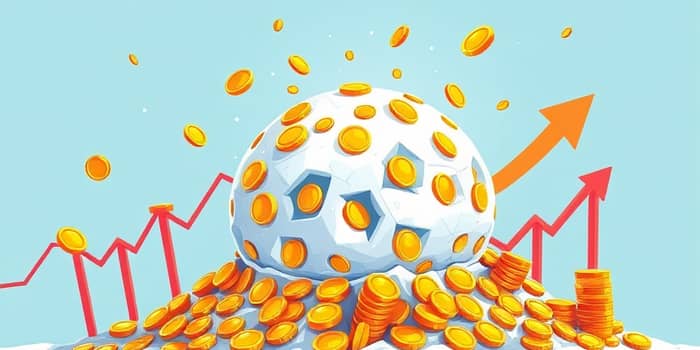
When pursuing long-term financial growth, few strategies are as powerful or as underutilized as dividend reinvestment through compounding. By taking every payout and putting it back to work automatically, investors can harness a snowball effect that transforms modest contributions into substantial wealth over decades.
Dividends represent a share of a company’s earnings distributed to shareholders, typically on a quarterly basis. When you own dividend-paying stocks or funds, you receive a cash payment proportional to your share count and the declared dividend amount.
Instead of pocketing these payouts, reinvesting dividends increases your share count, allowing you to earn more next time. This simple decision can supercharge growth, because each reinvestment purchase increases future dividend distributions and amplifies the overall rate of return.
Most brokers and fund companies offer Dividend Reinvestment Plans (DRIPs) that automate this process. When a dividend is paid, the broker uses those funds to purchase additional shares or fractional shares on your behalf—often without any commission fees.
Here’s what typically happens:
This automatic, set and forget investing approach means you don’t have to time the market or make emotional decisions; your contributions compound consistently over the years.
Compounding occurs when you earn returns not only on your original investment but also on the returns that investment has already generated. In the case of dividends, each payout increases your position size, leading to higher subsequent payouts.
Visualize compounding as a snowball rolling downhill. Each time it passes over fresh snow, it picks up more mass and momentum. Over long periods—20, 30, or even 40 years—that snowball can become enormous.
For example, consider a portfolio yielding 5% annually. If you reinvest dividends for 30 years instead of taking cash, you could nearly double the final value compared to cash distribution. This dramatic difference arises from the exponential nature of compound growth.
To put numbers on this effect, let’s examine two scenarios:
This example highlights how reinvested dividends can raise your annualized return by more than half a percentage point. Over time, that difference compounds into thousands of additional dollars.
Reinvesting dividends offers multiple advantages that make it one of the most effective strategies for long-term investors:
While reinvestment suits many, specific circumstances may call for a blended or alternative approach:
Understanding your objectives and tax situation will guide whether to reinvest fully, partially, or opt for cash distributions in certain holdings.
Putting this strategy into action is straightforward:
By automating purchases and periodically reviewing holdings, you can maintain an efficient, high-growth portfolio with minimal ongoing effort.
Patience and consistency unlock compounding’s full power. Small, regular increases in share count accumulate steadily. If you start early, even modest monthly contributions or low dividend yields can produce significant wealth over 20 to 40 years.
Remember the famous analogy: "Compound interest works like a snowball: the more you roll it, the bigger it gets." By reinvesting dividends, you add the fuel that keeps that snowball gaining size and speed.
Reinvesting dividends stands out as a proven, accessible strategy to harness compounding and build lasting wealth. By enrolling in DRIPs, taking advantage of fractional share purchases, and maintaining a disciplined, long-term mindset, investors can amplify returns and minimize emotional market timing.
Whether you’re just beginning your investment journey or looking to optimize an existing portfolio, the decision to reinvest dividends can significantly accelerate your path to financial goals. Embrace the power of compounding today, and watch your portfolio transform into a powerful wealth-generating engine over time.
References













